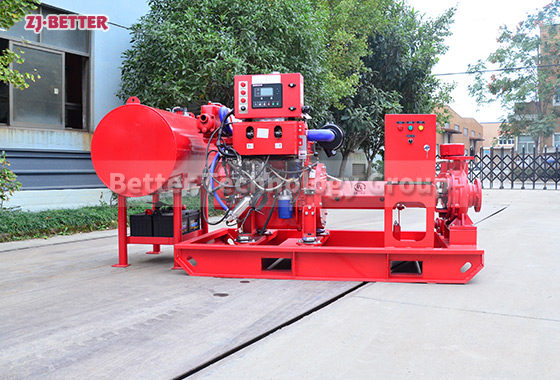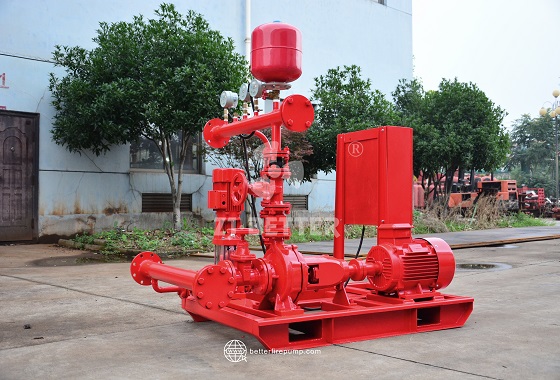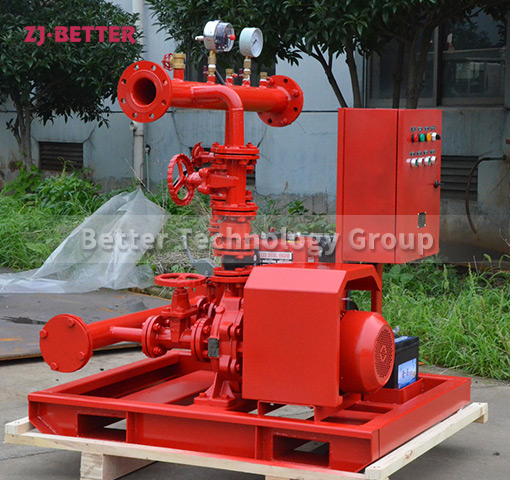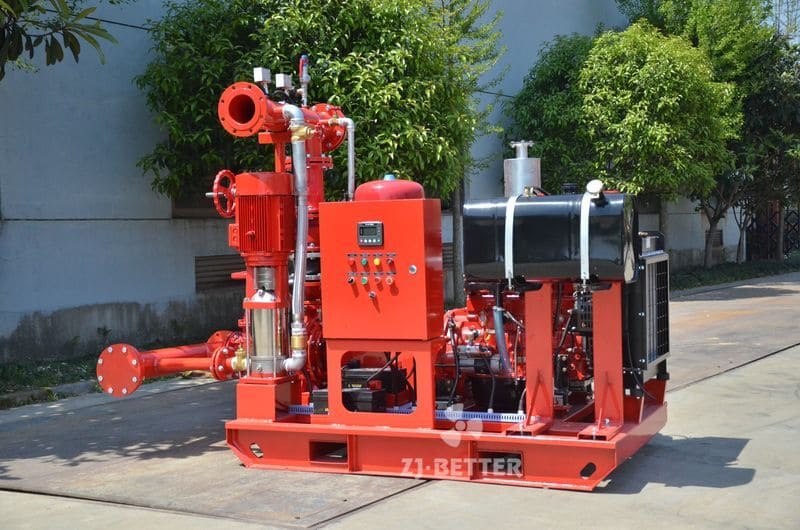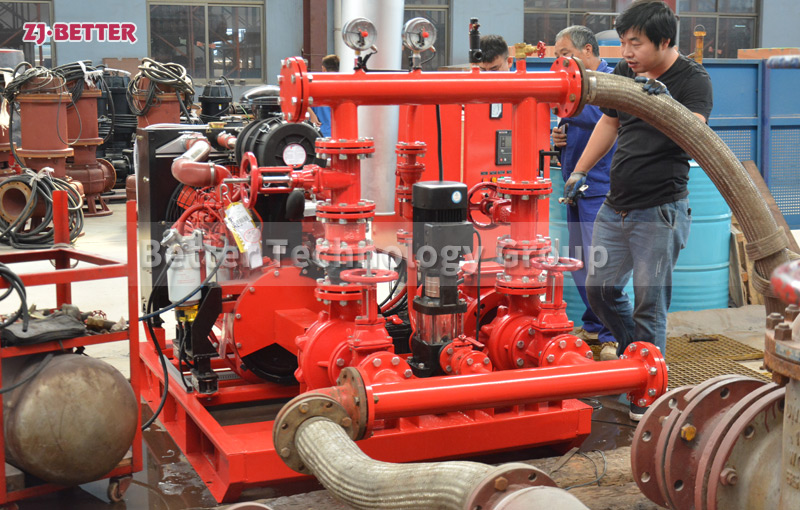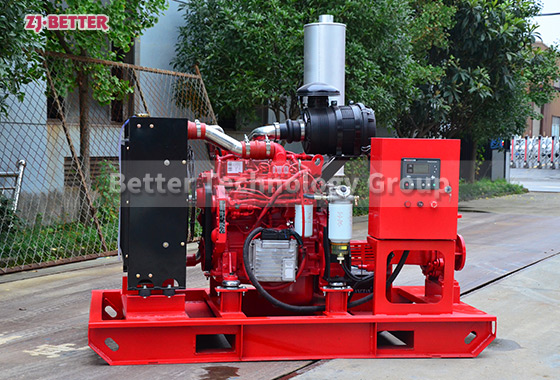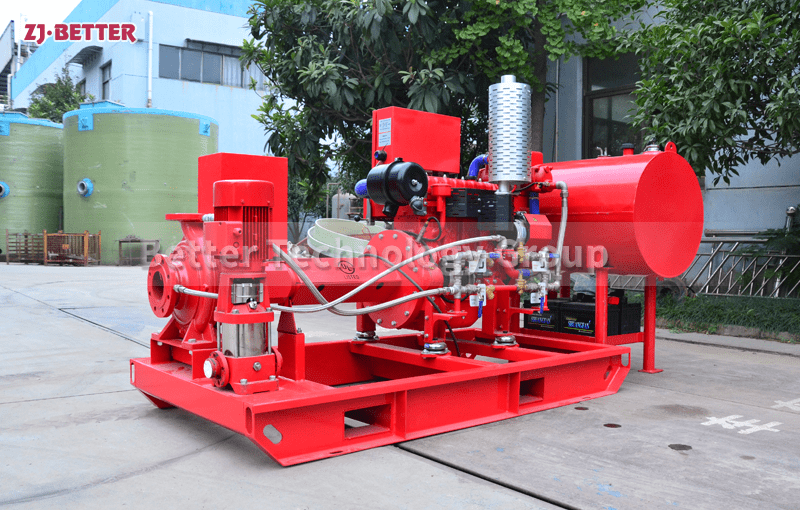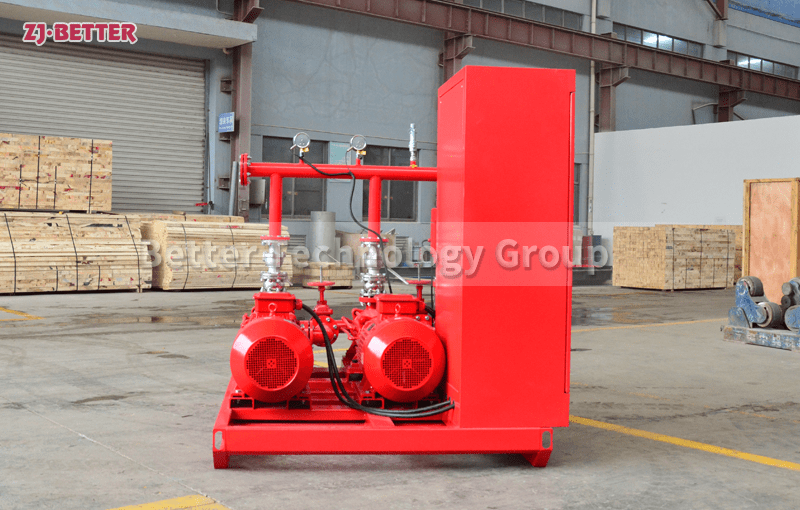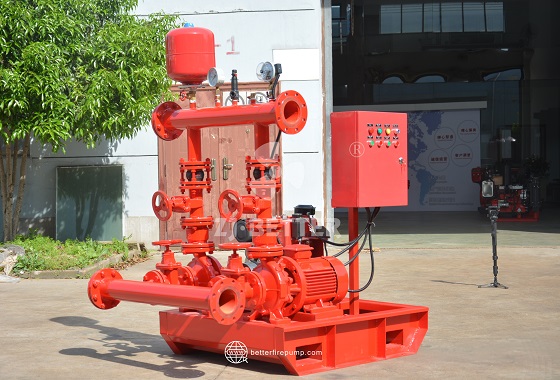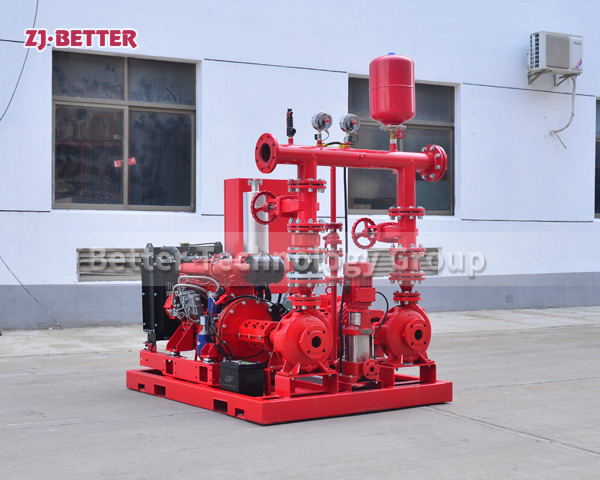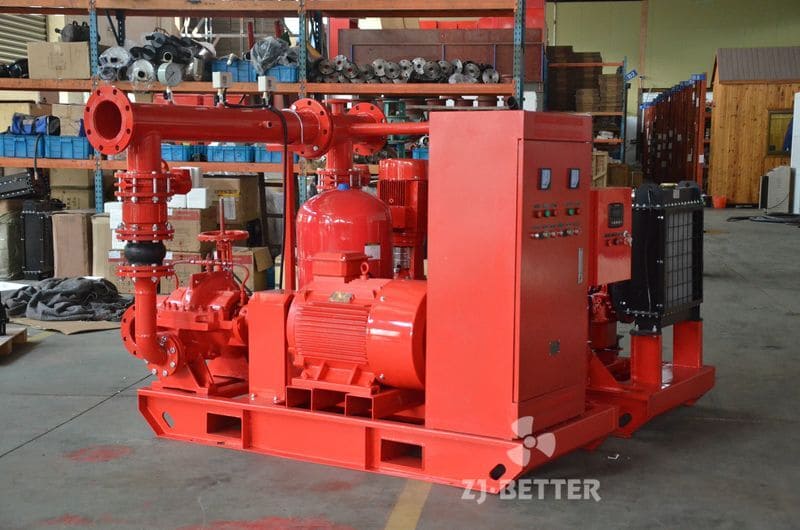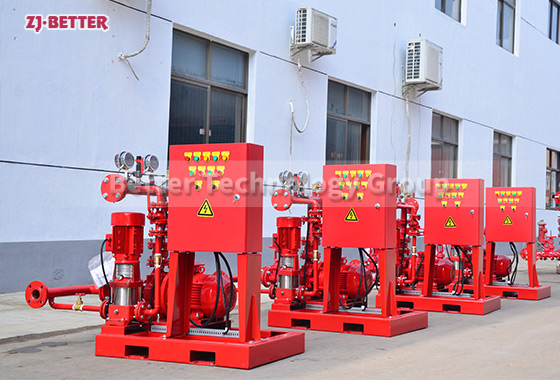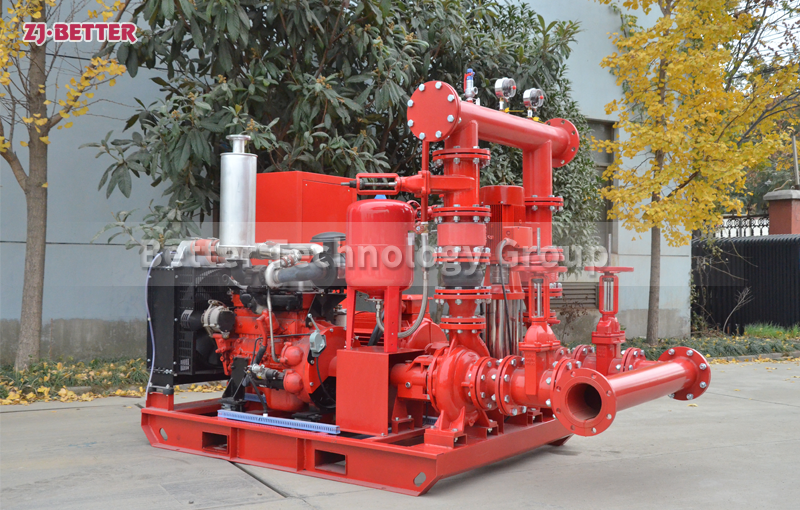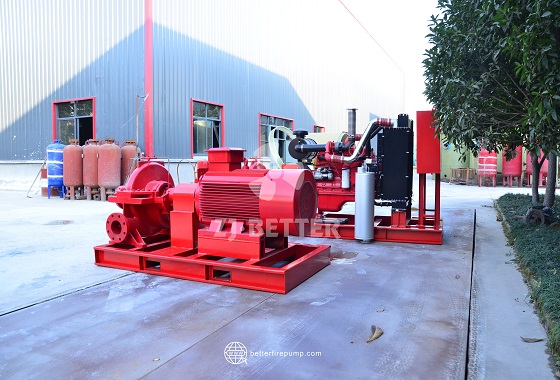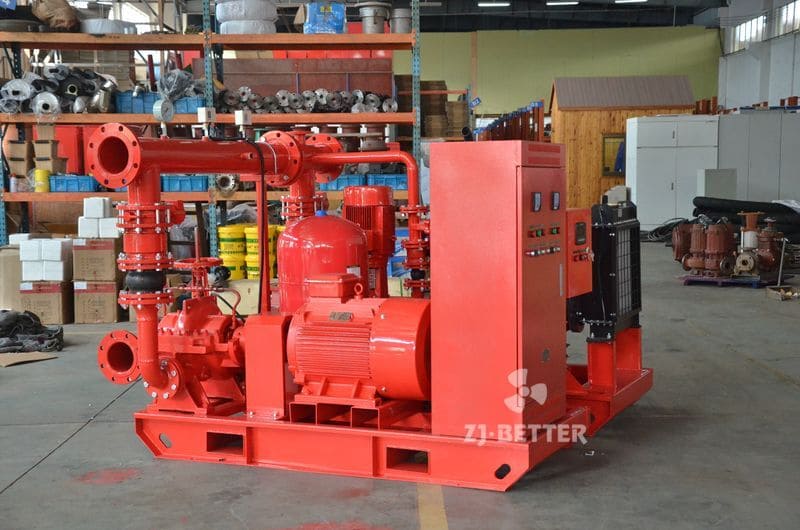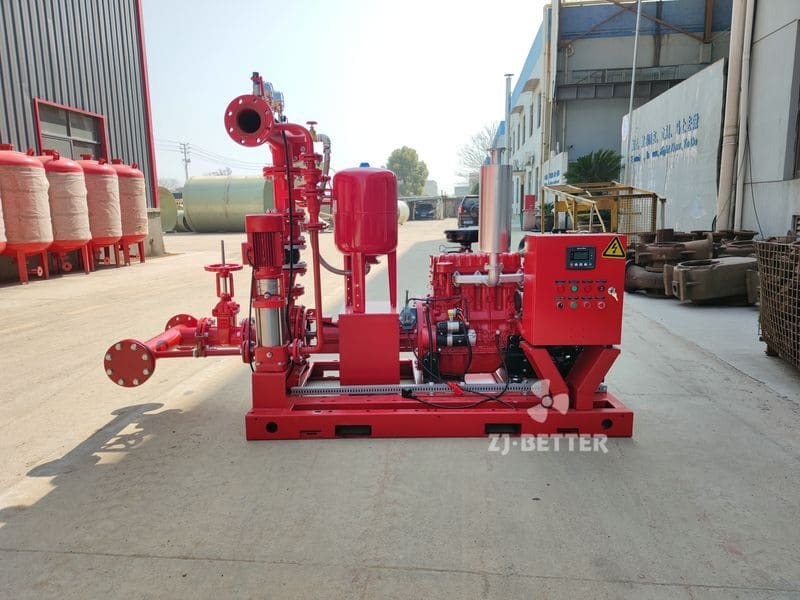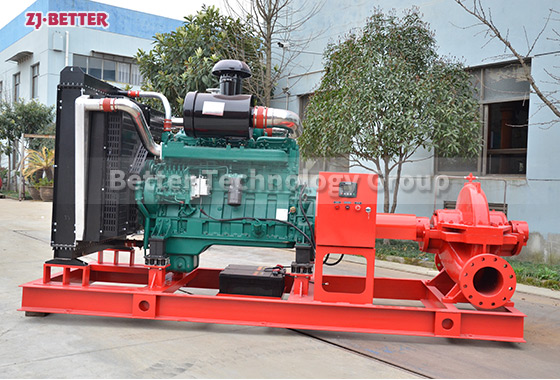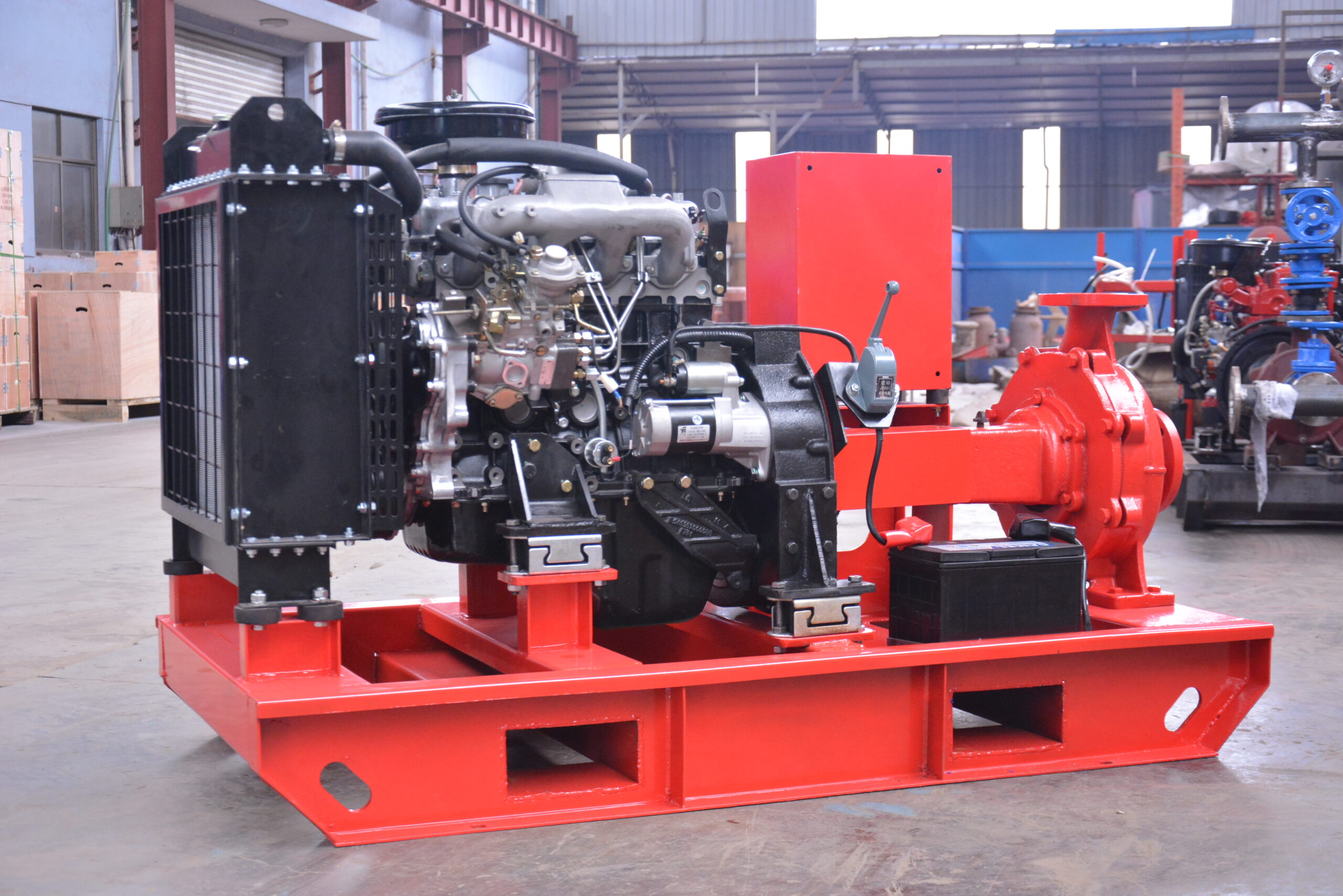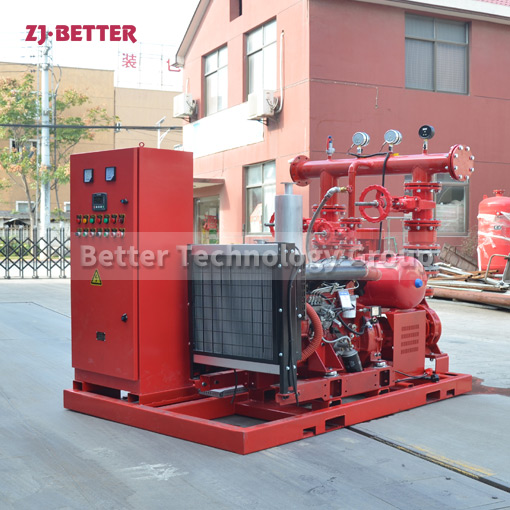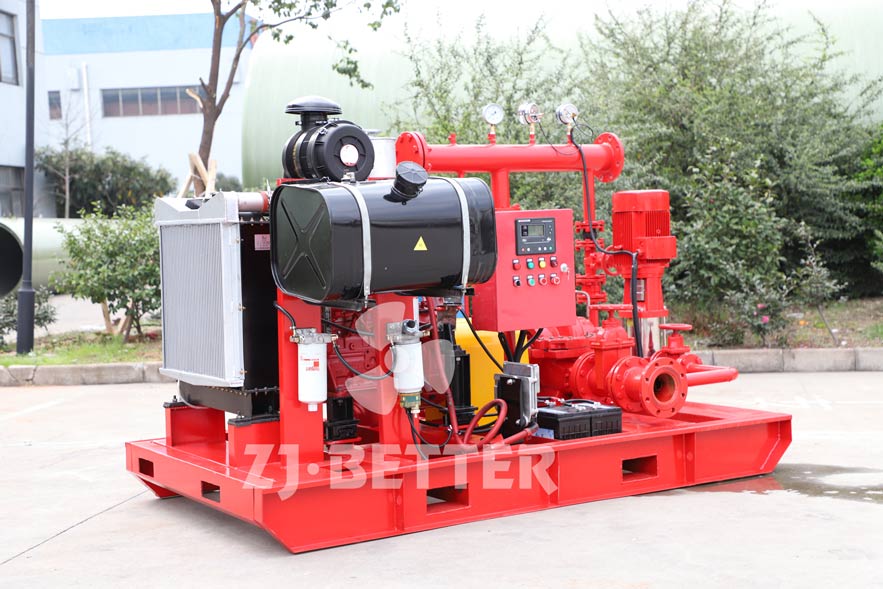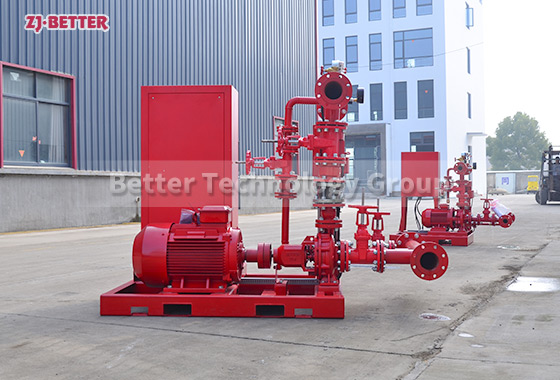Rapid and Effective:DJ Fire System
The DJ Fire Pump Set is a combination system consisting of a diesel engine pump and a jockey pump, designed for fire safety in the construction and industrial sectors. This system utilizes the powerful power output of the diesel engine pump, ensuring reliable operation even in the event of a power outage. The jockey pump maintains a constant water pressure, optimizing the performance of the fire suppression system. The DJ Fire Pump Set offers a reliable and efficient solution for prompt response to fire incidents, making it an essential component for protecting property and ensuring occupant safety.
Types of pumps used for fire service include: End Suction Pump, Split Case Pump, Vertical Inline Pump and Vertical Turbine Pump.
1.Diesel engine pump, with capacity and head equal to electric pump, with fuel tank, water tank, fan,control box.
2. Jockey pump, horizontal or vertical, capacity will be small, but head should be higher than electric and diesel engine pump.
3. Control panel: Auto Control of electric pump, diesel engine pump and Jockey Pump with overload, over current protection.
By choosing the DJ (Diesel engine pump + Jockey pump) Fire Pump Set, you opt for a reliable, efficient, and secure solution to protect your property and ensure the safety of occupants. Whether for commercial buildings, industrial facilities, or residential areas, it is an indispensable fire safety equipment that offers robust support and protection to your fire protection system.

